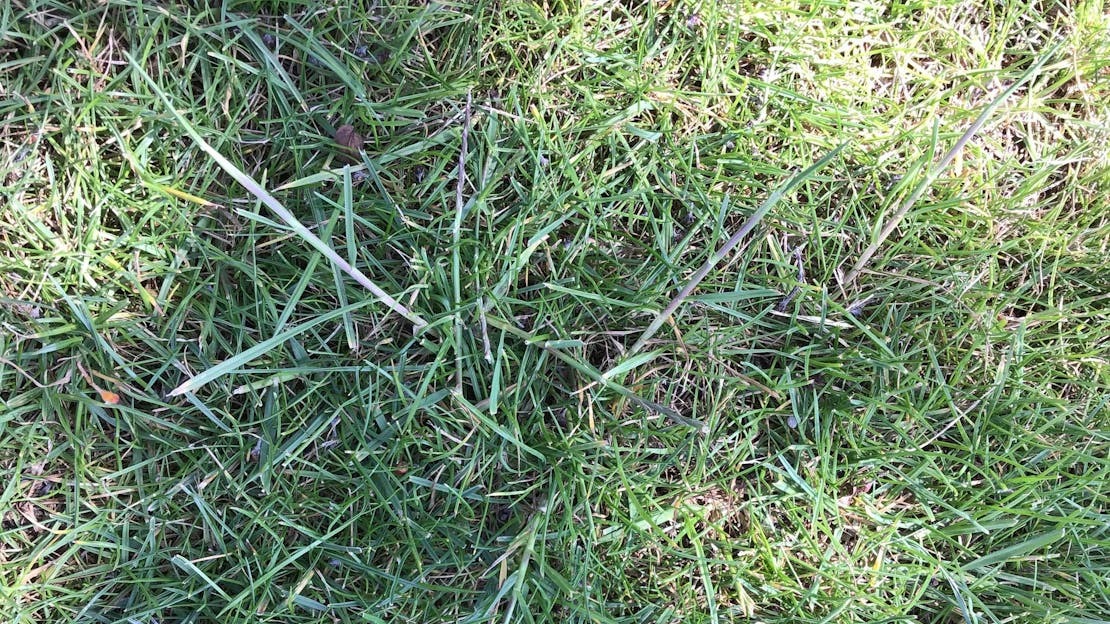
My Lawn is Growing Tall Grass Stalks
All grasses, including lawn grasses, produce seed heads, with some being more numerous and noticeable than others - one of those is rye grass.
As you can see from the image above long tough spikey seed heads are produced, often called soldiers, some pointing upwards and some lying horizontally so missing the mower! The good news is that the event is temporary lasting just a few weeks.
Though this is not the only grass type that will be seeding, rye grass seed heads are quite identifiable by a purple hue to the shaft as in the image above.
When will I see Seed Stalks in my Lawn?
These occur starting in late May and running through into July. This is the typical flowering period for many grasses, but as it occurs during a good growth period regular mowing can reduce the problem so that the soldiers are hardly noticed.
Why are some Years Worse than Others?
Plants produce seeds to reproduce the species but also as a defence mechanism. If the parent plant feels conditions are threatening its survival, perhaps a very dry or hot period, then to ensure the survival of the species the plant produces seeds. Seeds are generally very drought and heat tolerant and will survive where the parent plant may not. This means a hot dry spell may well cause the rye grass to produce far more seed stalks than a period with normal weather.
New Turf and Old Lawns can Produce Masses of Stalks
Other conditions that are not optimal for the grass plant may cause more seed spikes than normal. A new lawn from turf will often shoot profusely in the first spring due to it having had its roots cut off during harvesting. The plant is week and therefore seeding to ensure its survival.
Old lawns, where air, water and nutrients are not as readily available to the grass plant due to compaction also tend to produce more seed heads.
How do I get rid of Rye Grass Seed Heads?
The mower is the best defence. Please don’t start lowering the mowing height to try and cut them out as this may stress the grass even more and prompt it to seed more profusely. Instead, mow as often as you can before they get too long and start lying down. A rotary mower is best and even then, you may need to rake the seed stalks upright prior to mowing.
How do I Prevent them in the Future?
As we’ve discussed, any stress is a potential threat to the survival of the parent plant and may cause a mass seeding that becomes very noticeable. This means a healthy lawn, well aerated with adequate moisture and fertiliser will produce fewer seed stalks. Using a good slow-release granular feed in spring is essential which can be boosted by a liquid feed if the lawn needs it. See Flexible Feeding for the Perfect Lawn
Should I get rid of the Rye Grass in my Lawn?
Absolutely not!
Rye grass comes in various guises from the wild ones to those used for grass leys to feed cattle. This has created a bad name for rye grass due to its perceived coarse nature, but if you purchase seed from a reputable source, you will get a dwarf rye grass which is similar to those used on tennis courts. In other words, fine leaved and glossy green. And because the bottom of the leaf shines it makes a great addition to any lawn mixture because when cut with a mower with a roller it stripes wonderfully.